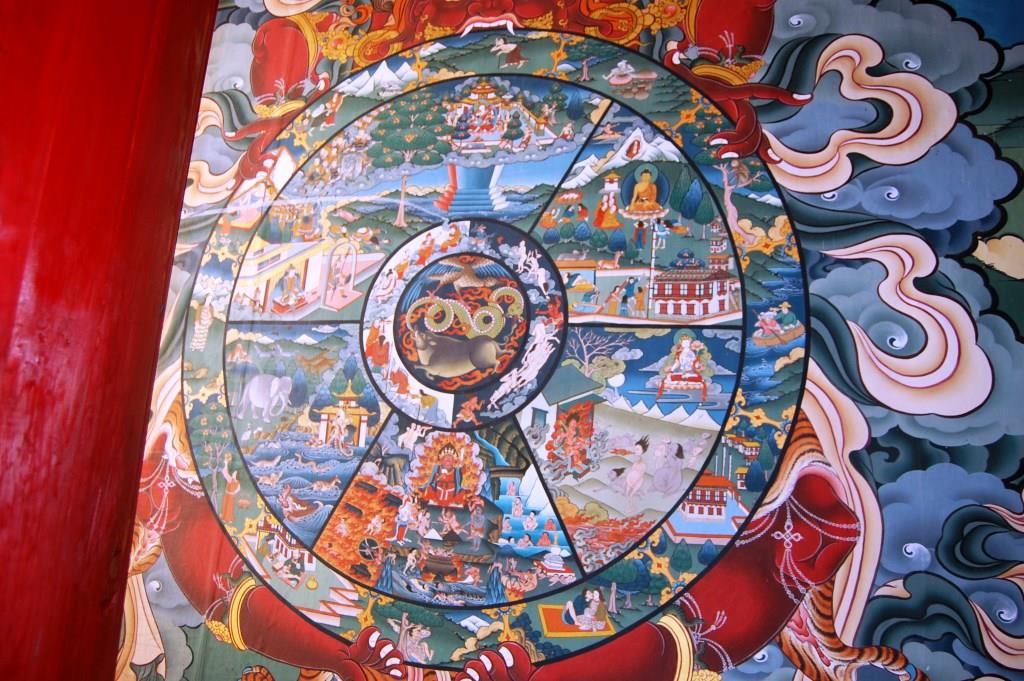Many Bhutanese monasteries and temples have “The Wheel of Life” adorning their entrances. It illustrates the following:
- It is held and turned by Yama, the Lord of Death and is a representation of the cycle of samsara.
- The inner circle depicts a cockerel (desire or attachment) biting a pig (ignorance or delusion) biting a snake (hatred or anger). Outside this are six segments each depicting the six realms of samsara or rebirth. And outside this are the 12 segments that depict the 12 links of the origin representing the processes by which we all live, die and are reborn.
- The Six Symbols of Longevity (Tshering Samdrup) are of Chinese origin and include an old man, peach tree, conch-shell shaped rock, river, a pair of cranes and a deer.
- The poem inserted geometrically in the grid of squares is dedicated to the Zhabdrung.


